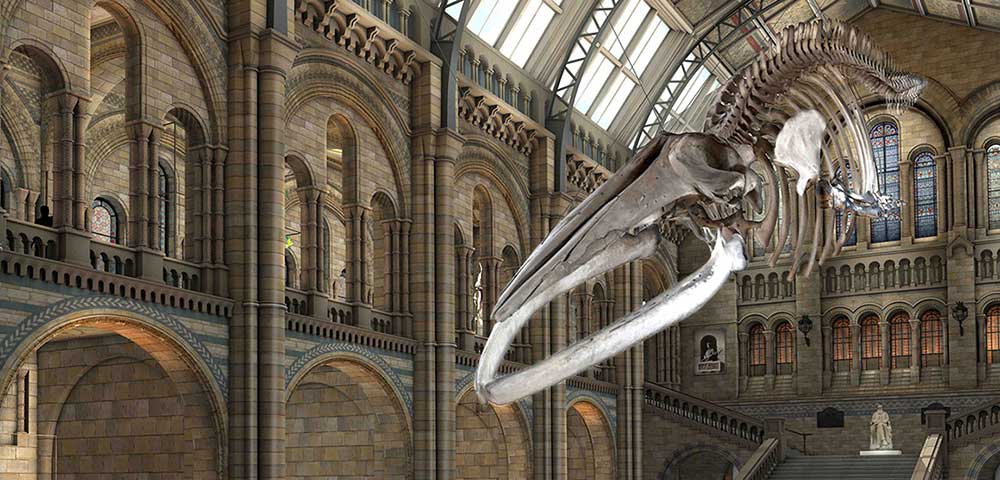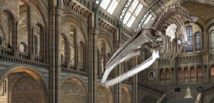Some 14,000 people signed a petition to stop the move, while the hashtag #savedippy trended on Twitter.
But the museum said the skeleton of the blue whale, the largest animal to have lived on Earth and which has been hunted to near extinction, would better raise awareness of mankind's impact on nature.
The 25.2-metre (83-foot) real skeleton suspended from the ceiling is proof that "by using science and evidence, we can make good choices about the future, about sustainability," museum director Michael Dixon told AFP.
Richard Sabin, the museum's leading whale expert, said exhibiting Hope in the atrium also showed that the Natural History Museum was "a museum of the future, a relevant museum that can be used to have debates, to answer those big questions in society".
The whale was previously in the mammals section but was not fully in view and will now take centre stage in the diving lunge feeding position in Hintze Hall, a cathedral-like space built in the late 19th century.
Fans of "Dippy" need not despair as the replica dinosaur will be preserved for posterity in a bronze cast to be placed outside the museum.
Prince William's wife Kate, the Duchess of Cambridge, was due to attend a gala launch reception for "Hope" on Thursday along with famous British conservationist David Attenborough.
There were estimated to be around 250,000 blue whales in the world's oceans in the 1800s but commercial hunting brought the species to the brink of extinction in the 1960s with just 400 specimens left.
Legal protection from hunting has since seen their levels rise up to around 20,000 now.
The skeleton on display is of a whale that became stranded in Wexford Harbour in Ireland in 1891, 10 years after the opening of the Natural History Museum.
---------------------------------------------------------------------------------------------------------------------
But the museum said the skeleton of the blue whale, the largest animal to have lived on Earth and which has been hunted to near extinction, would better raise awareness of mankind's impact on nature.
The 25.2-metre (83-foot) real skeleton suspended from the ceiling is proof that "by using science and evidence, we can make good choices about the future, about sustainability," museum director Michael Dixon told AFP.
Richard Sabin, the museum's leading whale expert, said exhibiting Hope in the atrium also showed that the Natural History Museum was "a museum of the future, a relevant museum that can be used to have debates, to answer those big questions in society".
The whale was previously in the mammals section but was not fully in view and will now take centre stage in the diving lunge feeding position in Hintze Hall, a cathedral-like space built in the late 19th century.
Fans of "Dippy" need not despair as the replica dinosaur will be preserved for posterity in a bronze cast to be placed outside the museum.
Prince William's wife Kate, the Duchess of Cambridge, was due to attend a gala launch reception for "Hope" on Thursday along with famous British conservationist David Attenborough.
There were estimated to be around 250,000 blue whales in the world's oceans in the 1800s but commercial hunting brought the species to the brink of extinction in the 1960s with just 400 specimens left.
Legal protection from hunting has since seen their levels rise up to around 20,000 now.
The skeleton on display is of a whale that became stranded in Wexford Harbour in Ireland in 1891, 10 years after the opening of the Natural History Museum.
---------------------------------------------------------------------------------------------------------------------









 Home
Home Politics
Politics











